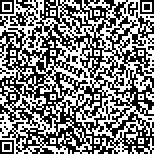下载中心
优秀审稿专家
优秀论文
相关链接
摘要

地表温度被认为是影响生态系统的关键因子之一,它与许多地表过程有关。目前,热红外卫星遥感技术是获取有关区域和全球尺度地表温度信息的一个有效、可行的手段。针对不同卫星上搭载的热红外传感器,许多学者开展了大量的研究,其中针对单波段热红外的特点(如Landsat TM/ETM+,CBERS 和 HJ-1B)提出了单通道(或单窗)算法。该类算法需要准确的地表比辐射率和大气参数(如大气水分含量)。这些参数在现实中又很难轻易获得,从而在一定程度上限制了现有算法的应用。针对HJ-1B高回访频率的特点,本文提出了利用多时相影像的时空信息来直接反演地表温度的Multi-Temporal and Spatial Information-Based Single Channel (MTSC),以解决现有算法对地表比辐射率和大气参数的过度依赖性。实例分析结果显示,基于MTSC法由HJ-1B反演得到的地表温度结果与MODIS地表(陆表和海表)温度产品具有很好的空间一致性;HJ-1B的陆表温度结果总体上被高估了约1 K,而海表温度结果总体上被高估了0.5 K;同时,MTSC法得到的HJ-1B地表温度结果具有更好的细节和空间完整性。最后,通过分析和讨论指出了一些可能的完善途径,如相似像元的确定、修改优化求解中的目标函数、参数的自适应初始化等,以便提高MTSC法的反演精度和实用性。
Land Surface Temperature (LST), widely recognized as one of the key indicators that influence the environment and ecological system, is involved in many land surface processes. It is regarded as an effective way to measure the LSTs at global and regional scales using the thermal sensors onboard satellite platforms. Many researchers have conducted studies and developed algorithms to retrieve LST from the thermal infrared imageries observed by sensors onboard different satellite platforms. For the sensors provided with one thermal band, such as Landsat TM/ETM+, CBERS, and HJ-1B, the single-channel (or mono-window) methods have been proposed as empirical models. However, the surface emissivity and atmospheric parameters (e.g., water vapor content) that are not readily accessible to common users are indispensable when these empirical models are implemented. The quantitative applications of these methods will consequently be limited to some extent. To overcome this problem, a new approach called Multi-Temporal and Spatial Information-Based Single Channel (MTSC) is proposed, which is based on the spatial and temporal information obtained from multi-temporal images. The HJ-1B is considered as an example, owing to its frequent revisit. The preliminary results demonstrate that the HJ-1B surface temperature results retrieved by the MTSC method are spatially consistent with MODIS surface temperature products (both for land and sea surfaces). Compared with the MODIS product, the LST is overestimated about 1 K and the sea surface temperature is overestimated about 0.5 K for the HJ-1B. The HJ-1B results retrieved by the MTSC method show more details with spatial integrity. Finally, followed by the in-depth analyses and discussions, some possible ways to improve the MTSC method are also suggested, including determining the similar pixels, modifying the objective function for optimization, and initializing the parameters adaptively. The MTSC method could be more perfect in view of its retrieval accuracy and practicability for common users, given that these improvements are made.

